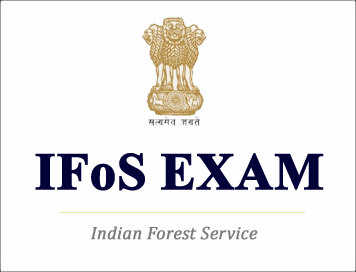(HOT) UPSC Current Affairs 2025 PDF
NEW! The Gist (NOV-2025) | E-BOOKS
(Download) UPSC IFoS (Main) Exam Paper 2020 "Agriculture Engineering - I"

(Download) UPSC IFoS (Main) Exam Paper 2020 "Agriculture Engineering"- I
Exam Name: IFoS (Main) Exam
Exam Year: 2020
Subject: "Agriculture Engineering"- I
'SECTION : A '
Q1. (a) State the adoptability and functions of the following structures :
(i) Drop spillway
(ii) Chute spillway.
(iii) Levees
(iv) Retards
(b) Discuss various methods of in-situ moisture conservation applicable for crop production under dryland areas.
(c) Define drainage density and derive the relationship between drainage density and ruggedness number.
(d) Differentiate between the following:
(i) Geostationary satellite and Polar sun-synchronous satellite
(ii) Active remote sensing and Passive remote sensing
(e) Define various satellite orbital characteristics.
Q2. (a) Briefly describe various methods of reducing surface wind velocities in wind erosion control.
(b) Calculate the volume of water available in the pond under the following conditions :
(i) When the pond is filled to 100% of its total depth.
(ii) When the pond is filled to 50% of its total depth.
The dimensions of the pond are as follows:
Shape – Trapezoidal, Depth 3.0 m, Side slope 2:1 (H: V), Bottom surface 21 m x 45 m.
(c) Determine the depth of runoff and peak rate of runoff for 25 years recurrence interval for antecedent moisture condition II from a 150 ha watershed. The curve number to apply for three 50 ha sub watersheds for antecedent moisture condition II are respectively 85, 65 and 75. Six hours, 25 years frequency rainfall for the given location is 120 mm. The time of concentration and time to peak of runoff are 30 min and 60 min respectively.
Q3. (a) Describe importance of stream ordering in watershed study.
(b) The normal annual rainfall at Stations A, B, C, and D in the basin are 80.97, 67.59, 76.28 and 92:01 cm, respectively. In the year 1985, the Station D was inoperative and the Stations A, B and C recorded annual precipitation of 91.11, 72:33 and 79.89 cm, respectively. Estimate the rainfall at Station D in that year.
(c) Discuss the methods of separation of baseflow from a runoff hydrograph.
Q4. (a) Explain spectral reflectance curve with the help of neat sketch for soil, water and vegetation.
(b) What are the methods of digital image processing ? Discuss any one in detail.
(c) Discuss the interaction of Electromagnetic Radiation (EMR) with the atmosphere and the Earth's surface.
'SECTION : B'
Q5. (a) Discuss the specialised structures used with underground pipeline system to control the water and protect the pipeline from damage.
(b) Discuss the coordinate method of measuring discharge from pipes discharging horizontally.
(c) Describe the importance and significance of selection of a suitable site for a nuclear power plant.
(d) What do you mean by Greenhouse Effect ? How does it affect the climate ? How can you build a low cost greenhouse ?
(e) Discuss the important hydraulic phenomenon involved in border irrigation method.
Q6. (a) A tank has a water spread area of 40 hectares with an average depth of 3 m of water. Calculate the area of paddy crop of 120 days duration that can be irrigated if the duty is expressed as
(i) 960 hectare per m3/sec
(ii) 110 hectare cm and
(iii) 90 hectare/million m’ of water
(b) Discuss about the pipe drain and pipless drains (mole) used in subsurface drainage system.
(c) Discuss the different types of sprinkler irrigation systems based on portability.
Q7. (a) (i) A stream of 130 litres/second was diverted from a canal and 100 litres/sec were delivered to the field. An area of 1.8 hectares was irrigated in 8 hours. The runoff loss in the field was 432 m. Available moisture holding capacity of the soil is 20 cm per meter depth of soil. Determine the water conveyance, water application and water storage efficiency. Irrigation was started at a moisture level of 50 percent of the available moisture.
(ii) Differentiate between the following :
(I) Semi confined aquifer and Perched water table
(II) Transmissibility and Storage coefficient
(III) Piezometric surface and Pumping water level
(IV) Single acting pump and Double acting pump
(b) Differentiate between the following:
(i) Saline-alkali soil and Non-saline alkali soil
(ii) Saturation capacity and Field capacity
(iii) Permanent wilting point and Ultimate wilting point
(iv) Soil texture and Soil structure
(c) Discuss the basic requirements for any well screen.
Q8. (a) Discuss safe disposal of all human sewage and domestic wastes in farmstead planning, illustrating suitable layout. How is it different from homestead planning ?
(b) What is sanitary drainage system ? What are the different types of drainage systems ? What is the difference between sewage and drainage ? How can drainage systems be improved ?
(c) What are the considerations to frame water supply system in rural areas ? Illustrate with examples.


